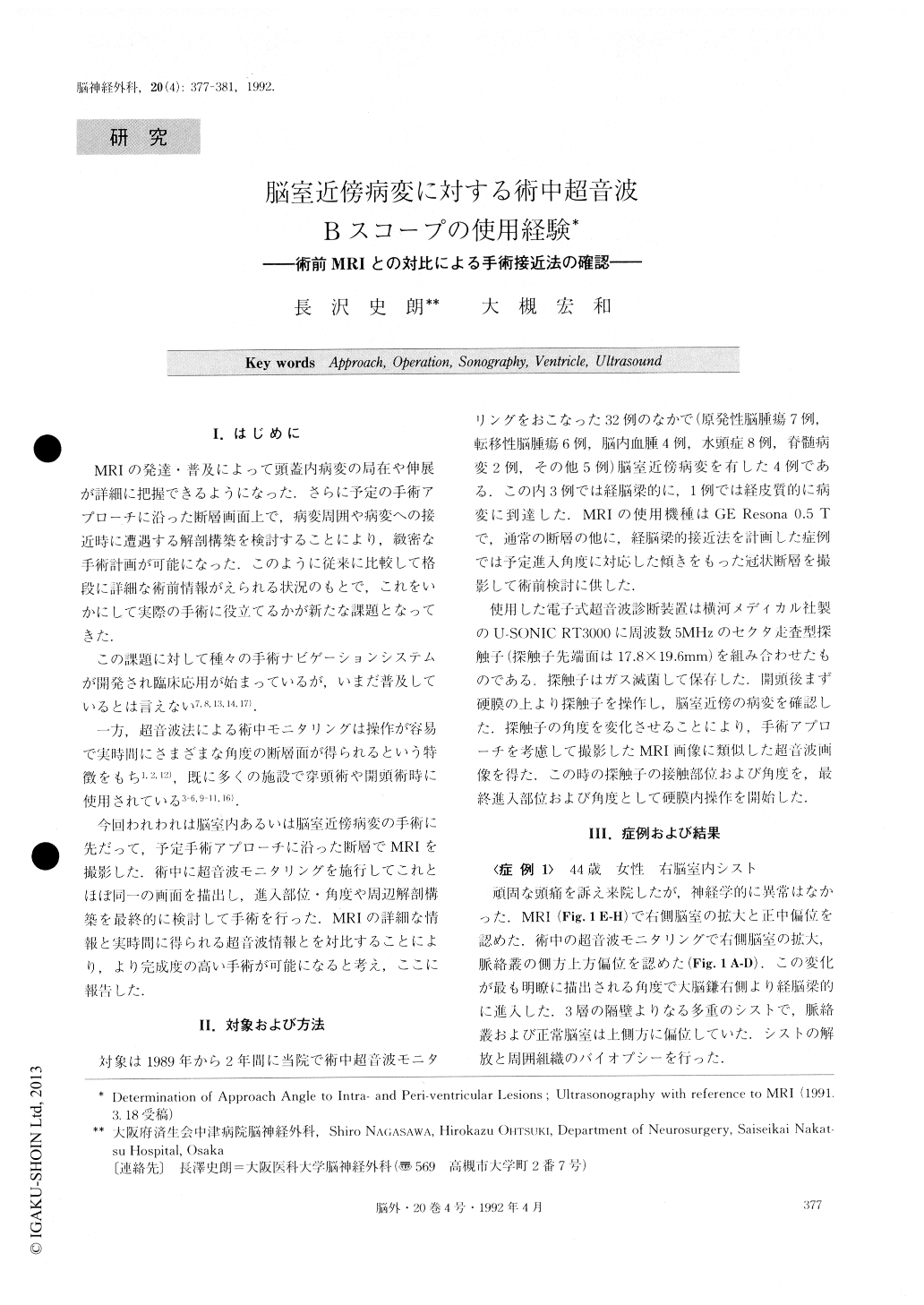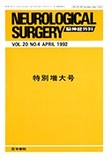Japanese
English
- 有料閲覧
- Abstract 文献概要
- 1ページ目 Look Inside
I.はじめに
MRIの発達・普及によって頭蓋内病変の局在や伸展が詳細に把握できるようになった.さらに予定の手術アプローチに沿った断層画面上で,病変周囲や病変への接近時に遭遇する解剖構築を検討することにより,緻密な手術計画が可能になった.このように従来に比較して格段に詳細な術前情報がえられる状況のもとで,これをいかにして実際の手術に役立てるかが新たな課題となってきた.
この課題に対して種々の手術ナビゲーションシステムが開発され臨床応用が始まっているが,いまだ普及しているとは言えない7,8,13,14,17).
Ultrasonography using a 5-MHz sector-scanning probe was performed in 4 patients with intraventricular or periventricular lesions. All patients underwent cra-niotomy, and the lesions included an intraventricular cyst (Case 1, Fig. 1), a suhependymoma (Case 2, Figs. 2 and 3) , a hypothalamic glioma (Case 3, Fig. 4) and a periventricular cavernoma (Case 4, Fig. 5). The lesion was approached in the former 3 cases via the transcal-losal route and in the last via the transcortical route.both the lesion and the anticipated operative route to it were shown on the image, so that the approach angle and surrounding structures could be assessed. During craniotomy, intraoperative ultrasonographic examina-tion was performed while the dura was still closed. By frequently changing the probe direction, we were able to obtain an image similar to that shown on the preop-erative MRI, and we then initiated intradural operative procedures at an angle parallel to the axis of the probe. Since MRI provides detailed anatomical information about the approach to the lesion and the tissue around it, it has become an indispensable tool in the planning of neurosurgical operations. Although ultrasonography generally provides poorer resolution than does MRI, especially for deep structures, it does provide conve-nient, real-time images of any slice. Because the in-terhemispheric fissure, lateral ventricle, and choroid plexus have distinctive shapes and echogenicities and,hence, can be readily recognized, we found that they can be good landmarks in the imaging of periventricu-lar or intraventricular lesions.
Final determination of the approach angle to the le-sion was more easily made on the basis of intraopera-tive ultrasonographic images with reference to MRI than on the basis of MRI alone. The advantages of the former include a straightforward approach to the lesion and minimizing of an injury to the surrounding brain tissue. Real-time information, for example, information regarding residual tumor or postoperative hematoma, was also available when ultrasonography was used. In conclusion, intraoperative ultrasonography in combina-tion with preoperative MRI is very useful during the extremely technical surgery required for deep periventricular or intraventricular lesions.

Copyright © 1992, Igaku-Shoin Ltd. All rights reserved.


